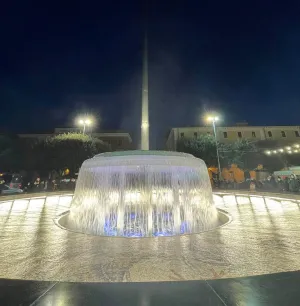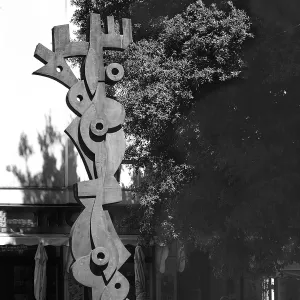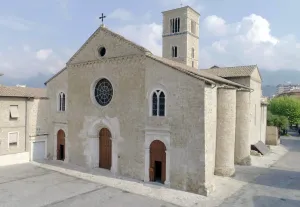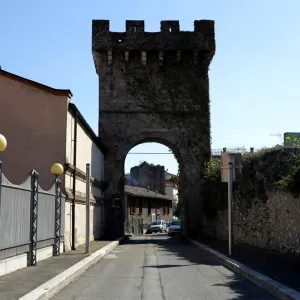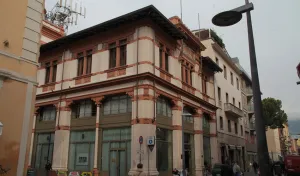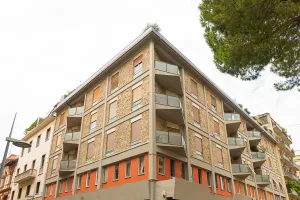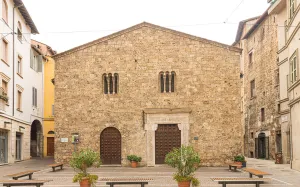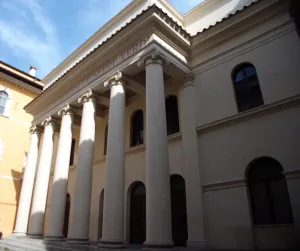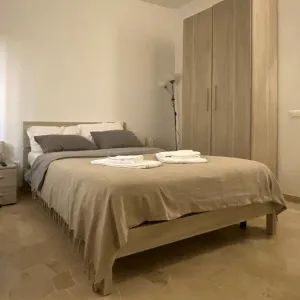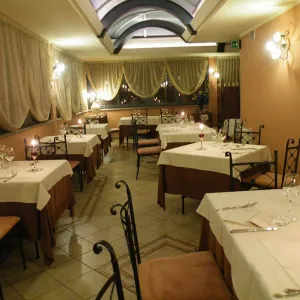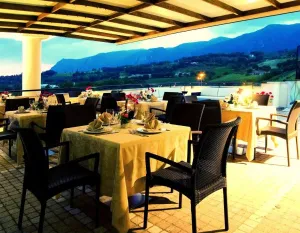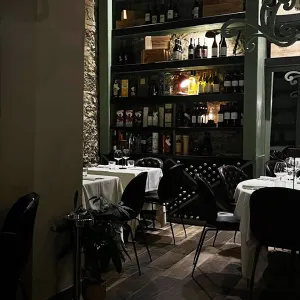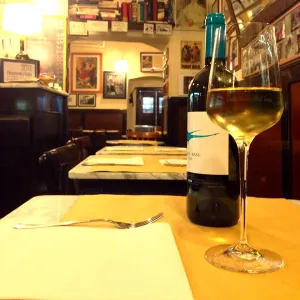Government Building (Palazzo Bazzani)
Bazzani, a lover of classical forms, is one of the great architects who shaped the modern look of Terni. He was commissioned to intervene in the points of excellence of the city, before a national competition was launched to draw up an urban project for Terni, that seemed to be heading towards tumultuous growth.
The company Lattes-Staderini won the competition. The city plan was put on hold due to an unpredictable event, the tragic and untimely death of architect Enrico Lattes. Years later, after Fascism and the war, the task of reconstructing and redesigning the city fell to Mario Ridolfi.

Architect of numerous and various "important" interventions, Bazzani designed his most imposing work in Terni in Tacito Square, the directional heart of the city, destined to house the office of the Province and Prefecture.
The decision to direct the building towards the street that leads to the station, rather than to the square, reduces the monumentality of Piazza Tacito, even though this is compensated by a roof terrace, built on the corner of the building, symbolising the supremacy of the new Institution over the rest. The Government Building reflects all the characteristics of classical architecture, starting from the gigantic size of its entrances, the staircases (outside and inside), the order of the floors and finally, the extensive use of arches.
The façade, made mainly of marble, was intended to house the symbols of the regime, most of which were removed in the middle of the 1940s. They were included in a large parapet conceived as an ornament of the building which, in the spirit of the designer and the sponsors, with its "monumentality", was supposed to celebrate the recognition of Terni as a provincial capital.
Therefore, at the same time, its modernity and dynamism as well as its characterisation as a city of steel and energy was recognised. A characterisation that would be completed just a short time later, with the renovation of Piazza Tacito and the fountain by Ridolfi and Fagiolo.
On Piazza Tacito, on the other hand, Cesare Bazzani had already intervened – to make it visually the symbolic square of the new Terni- with the Manni building, another of the many buildings which gave meaning to the relationship between the architect and the city. A city where he had made his mark with work that ranged from the industrial school in Viale Brin, to the Inps building on Corso Tacito, to the station square, to the post office building on Piazza della Repubblica. In addition, there was the work he did on funeral monuments and private houses, including the Alterocca building on Corso Tacito, which is particularly unique.
